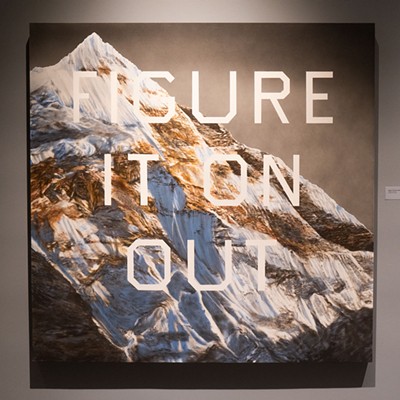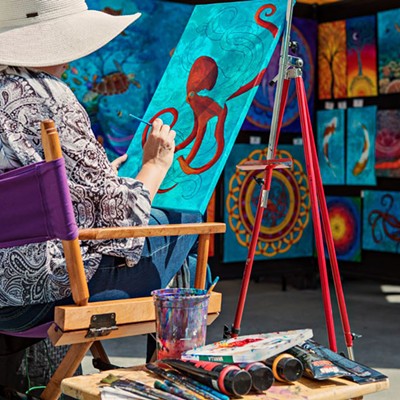
Shan Goshorn is a preservationist, storyteller and human rights activist. In other words, she’s a contemporary Native American artist.
Goshorn, a Tulsa resident and Eastern Band Cherokee tribe member, has been supporting herself as an artist for 30 years and exploring various media — including photography, beadwork, painting, glass and metalworking — to educate audiences about Native American history and culture.
Just a few years ago, Goshorn delved into another traditional craft: basketry.
“I am an artist that chooses the medium to best express an idea,” she said, “to best express a statement I’m trying to make.”
Weaving printed political documents, maps and speeches into a basket representative of ancestral Cherokee design, Goshorn plans to make a bold statement concerning Native American removal in the 19th century at the 43rd Annual Trail of Tears Art Show.
Goshorn, along with Native American artists from across the country, submitted more than 150 juried pieces to be featured in the annual art exhibition at Cherokee Heritage Center in Park Hill, near Tahlequah.
About 14 different tribes were represented in last year’s show, said curator Mickel Yantz, but 60 to 70 percent of artists are of Cherokee descent.
As curator for 10 years, Yantz said the purpose of the show has changed.
“When it originally started in ’72, every piece of art depicted the Trail of Tears,” he said. “The show happened before the [museum building] was constructed, so it was a pathway for education of Cherokee history and the Trail of Tears.”
Now, the show encourages native artists to express themselves freely, which yields a diversity of tribes, artwork and themes.
“We also have this great section of the art show of contemporary art, digital art, artists’ representations of new technology, references to [the] iPhone and Facebook and Twitter while using the Cherokee language at the same time,” Yantz said.
However, Goshorn — who submitted two baskets to the show — employs the past both in her artistic process and themes.
For her basket titled “We Belong to This Land,” Goshorn printed 16,000 signatures of the Cherokee people who protested the Treaty of New Echota, which was signed “under cover of darkness by a handful of men that gave the United States government the authority to remove the Cherokee” and relocate them to Indian Territory.
“I had the idea to work with some of these treaties and weave a basket,” she said, “and I wove it in a pattern called ‘spider’s web’ because I wanted to show how tangled this particular compact was.”
She then used a double-exposed, black-and-white, hand-tinted photograph of a Cherokee woman in traditional Cherokee attire superimposed over a mountain landscape.
Last year, Goshorn won four fellowships giving her access to expansive historical archives, including those at the Smithsonian.
“[It’s] wonderful because it is a way to educate audiences, but a lot of the information that I gather is pretty unhappy news,” she said.
Fortunately, the Trail of Tears Art Show provides an opportunity to identify new talent.
Candessa Tehee, executive director of the Cherokee Heritage Center, said the show demonstrates contemporary Native American art culture.
“You’re seeing people being very, very inventive with traditional media and moving into more modern media as well,” Tehee said.












